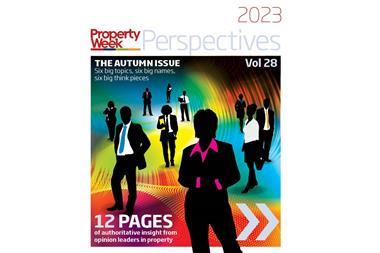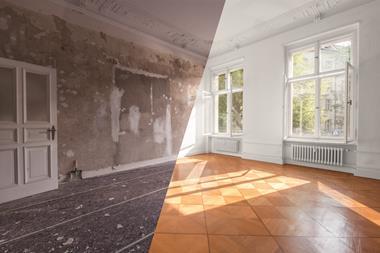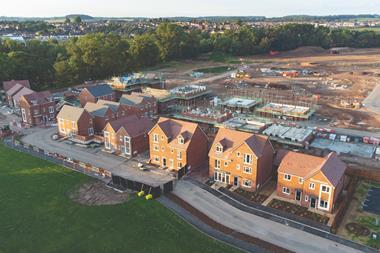Utility expenses are one of the biggest controllable expenses in commercial buildings. Yet an average commercial building wastes 30% of its energy consumption due to inefficiencies and lack of proper management.

This highlights an opportunity to take a more proactive approach on measuring energy consumption and implementing solutions to improve how a commercial building operates.
A reduction in energy consumption is good for the bottom line and is great for the environment. It is estimated that a reduction of between 25% and 30% in real estate energy emissions could in turn help the US and other nations hit the Paris Agreement targets within the next 10 years, which would be a remarkable achievement.
Yardi has developed a comprehensive energy management platform for commercial and build-to-rent real estate portfolios called Yardi Pulse. We believe having a better understanding of utility and energy consumption is an important first step in developing strategies to reduce consumption and improve efficiencies in how a building operates. Our energy solutions have been available in the US for a number of years and are currently being deployed to international markets, including the UK.
Tackling the energy efficiency of a building can be daunting, as it is often difficult to understand where to start or how to calculate the benefit of an investment
Yardi solutions have traditionally been focused on servicing the back office of real estate investors, owners and operators to manage their property portfolios using Voyager – our enterprise resource planning platform. This focus on real estate has allowed us to gain a deep understanding and data set of how buildings are managed, the expenses associated with utilities and the costs associated with running the mechanical and plant operations in a building.
Yardi Pulse has been created as a software-driven energy strategy that is comprehensive in terms of functionality and easy to use and provides a short payback period for clients.
Yardi Pulse has three core functional modules. Utility Expense Management is crucial to understanding and documenting energy consumption in a building and across a portfolio. By leveraging machine learning to provide automated validations to ensure that utility expenses are correct, late fees, bill errors and over-payments can be reduced. Detailed consumption data in turn helps provide valuable portfolio benchmarking. This granular consumption data in turn becomes the starting point to build an effective energy strategy.
Energy Intelligence is the second building block, which is fuelled by real-time data being collected through Internet of Things (IoT) real-time metering devices installed in the buildings. This enables visibility to compare usage, savings and spikes between time periods across an entire portfolio to highlight outliers. This data allows clients to make incremental but powerful changes.
Energy efficiency
Energy Automation is the third building block, designed to maximise building performance with energy automation technology that prevents HVAC-system problems by proactively detecting faults and providing alerts. This also allows clients to automate their heating and cooling to optimise tenant comfort and minimise wasted HVAC costs.
Tackling the energy efficiency of a building can be daunting, as it is often difficult to understand where to start or how to calculate the benefit of an investment. We have found that an incremental strategy by focusing on first gaining visibility into consumption and demand can reduce costs by 2% to 5%.
Over time, building owners and operators can identify their highest cost/highest ROI assets as candidates for energy automation. This then leads to additional cost savings exceeding 10% to 15%. We expect cost savings to increase, as we further develop artificial intelligence and machine learning engines to analyse larger data sets on consumption as well as other data points that will be collected with the deployment of additional IoT sensors in buildings.

The market has also seen an increase in demand from investors and tenants for more energy-efficient buildings. From an investor perspective, an energy-efficient building is one of their investment criteria. Not only does an energy-efficient building increase the appeal of the investor, but it also tracks higher-value tenants that rank sustainability and energy efficiency in their decision process to choose space.
Australia is often looked to as a leader in energy-efficient, sustainable buildings and investment strategies. Earlier this month, GRESB, the environmental, social and governance benchmark for real assets, listed Australia at the top of its global survey for the ninth year running. The early establishment and evolution of the NABERS sustainability ranking for buildings in Australia has been an important industry measurement used by both investors and tenants.
Support from the Australian federal and state governments in choosing high NABERS-ranked buildings for their space, has certainly helped the process and nudged the industry towards a focus on energy efficiency.
The UK is not far behind, as we see the local real estate sector continuing to drive investment with a focus on sustainability and energy-efficient buildings. By doing so, we are not only helping owners of property portfolios but also our current and future generations by creating a more sustainable built environment.
Sustainable efforts
Tackling the process of retrofits with older buildings poses problems of expense and disruption. The starting point is to understand consumption and use data for modifications. Utility invoices are always paid, but not much time has traditionally been spent analysing consumption data. Leveraging software-driven energy strategies provides a low-cost option with no tenant disruption that brings short-term results.
Yardi has long been a supporter of sustainable efforts, which in turn influence our investment and operation decisions. We do not reflect this only in our own solutions but also in how we work with other associations such as the NAA, Energy Star and GRESB, as well as supporting government initiatives on sustainability.
Alongside using Yardi Pulse or similar solutions, one thing every company can do is make a commitment to improve energy-efficiency initiatives in their properties. Communicating these goals to investors, tenants and employees is also important. Large owners and operators in the UK are already leading the way by including corporate social responsibility initiatives, which often include sustainability efforts and GRESB filings in their annual reports.
Fortunately, the costs of improving a building’s energy efficiency are going down and we are seeing the proliferation of smart buildings across the country. This generally means that the buildings have been designed to be more energy efficient and that advanced building management systems enable us to have better real-time data to analysis.
Consider what changes you can make today in your real estate portfolios, and together we can help make big strides in the reduction of energy consumption in real estate in the UK and across the globe. And it is good for the environment too.
Yardi develops and supports industry-leading investment and property management software for all types and sizes of real estate companies. Established in 1984, Yardi is based in Santa Barbara, California, and services clients worldwide from offices in the UK, Europe, Australia, Asia, the Middle East and North America. For more information, visit yardi.co.uk.
Topics
PW Perspectives: Autumn 2019
- 1
- 2
 Currently reading
Currently readingTogether we can reduce energy consumption
- 3
- 4
- 5
- 6



































No comments yet